
|
River Country Closed by Brain-Eating Amoeba? Part 2 |
||
|
|
|||
|
In part 1 of this 2-part article, I wrote about the history of Disney’s River Country water park, and whether it was true that a child died from a brain disease linked to amoeba at River Country. Part 2 is about why River Country never reopened after the end of its 2001 season. If you haven’t read part 1, you might want to do so before reading part 2.
|
|||
|
The Claim: River Country had to close when Florida law changed to require waterparks to use water from municipal water systems, not from natural bodies of water. Status: False |
|||
|
|
|||
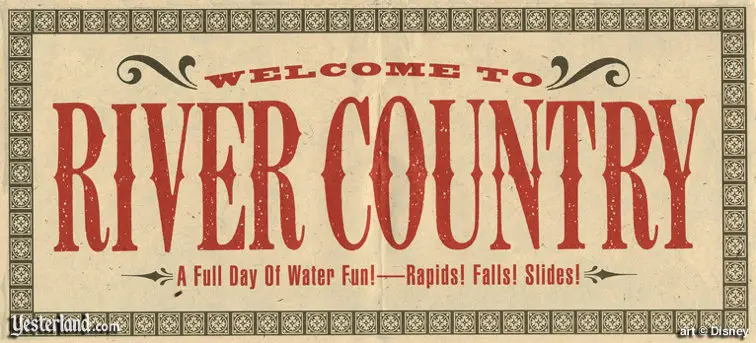
Art and text from a 1993 handout given to River Country guests In 1993, River Country was still going strong. |
|||
|
If you use Google to search for the reason that Disney’s River Country closed, you’ll find the same story over and over. The wording varies, but it’s typically something like this: “New Florida laws required waterparks to use water from municipal water systems, not from natural bodies of water.” The explanation seems plausible. Whatever Disney had done to prevent a repeat of the amoebic meningoencephalitis death in 1980 was clearly working. But, if you believe the explanation, pesky government bureaucrats or well-meaning, but clueless, legislators made it impossible for Disney to keep River Country open legally. In reality, the permanent closing of River Country was a business decision, not the consequence of regulations from Tallahassee. |
|||
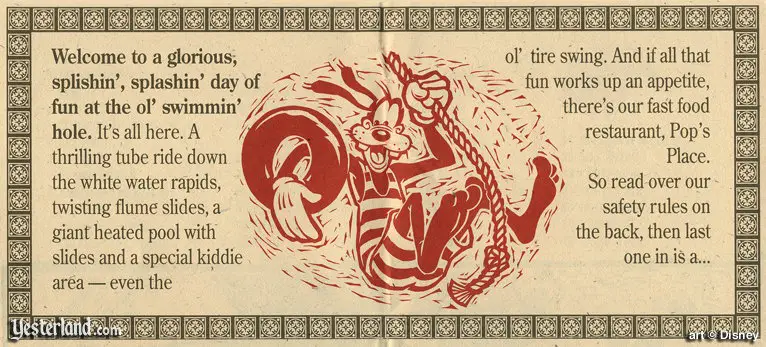
Art and text from a 1993 handout given to River Country guests What was fun in 1976 was still fun in 1993—and eventually 2001. |
|||
|
As it did every year, River Country closed at the end of the warm-weather season of 2001, with the expectation that the water park would reopen in spring of 2002. Then came the terrorist attacks of September 11, 2001. Walt Disney World management took drastic actions to control costs in the months that followed the September 11 attacks to deal with the resulting drop in attendance and revenue. Hourly workers and skilled trade workers had their hours cut, with correspondingly smaller paychecks. Thousands of salaried workers were asked to volunteer to work 20% fewer hours, with a 20% reduction in salary. Well-paid technology contractors were told their services were no longer needed. All parks would have shorter schedules. For example, at Epcot, Future World and World Showcase would each open an hour later, and most Future World attractions would close two hours earlier. Theme park shows which had been daily would now be “dark” some days. Surprise! Guests staying at Disney resorts learned that “Surprise Mornings” were gone. These exclusive early-morning park hours had been one of the reasons for booking a Disney resort instead of less-expensive off-site lodgings. Some restaurants closed, including the Galley at Disney’s Yacht Club Resort. The Epcot International Food & Wine Festival for 2001 scaled back its food kiosks and seminar schedule. Many guest chefs were told they weren’t needed. The opening of Disney’s Pop Century Resort, which had already been postponed from December 2001 to March 2002 before the attacks, was canceled. Construction stopped. No new date was announced. The first half of the resort eventually opened in December 2003. The Disney Institute, whose educational offering had already been scaled back, would shutter its 584 rooms and suites. Eventually, the residential buildings (most of which were built in the 1970s) would be demolished to make way for Disney’s Saratoga Springs Resort & Spa, a new Disney Vacation Club property, which reused the newer (1996) nonresidential buildings of the Disney Institute as its core. Disney’s Port Orleans Resort would close the Riverside section, leaving only the French Quarter section, for an unspecified length of time. Apparently, it was good business to shutter some resorts entirely to improve occupancy at the remaining resorts. Slowly, as attendance began to recover, Walt Disney World reversed some of its cutbacks—but nowhere near all of them. If guests could have a good experience and spend their money despite Disney’s lower cost structure, it would mean a better bottom line profit. After all, Disney is a business. When the time came for River Country to reopen for the 2002 season, it didn’t. As already noted in Part 1 of this article, the Orlando Sentinel of April 11, 2002, reported, “Walt Disney World’s first water park, River Country, has closed and may not reopen.” Or maybe it would be back after all. According to the article, “Disney World spokesman Bill Warren said that River Country could be reopened if ‘there’s enough guest demand.’” River Country was still there. Maybe, a year or two later, it would receive its usual pre-opening maintenance and the water would flow again to the delight of children and adults. Right? Wrong. |
|||
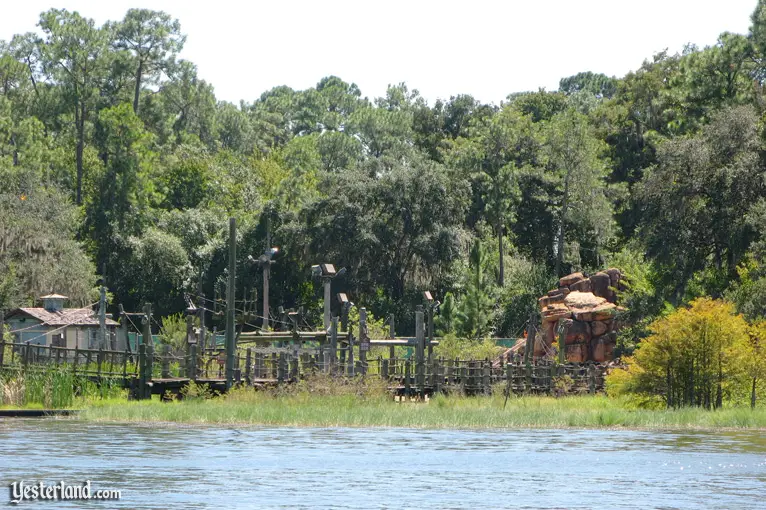
Photo by Werner Weiss, 2011 The former Ol’ Swimmin’ Hole from Bay Lake |
|||
|
Although River Country was the first water park at Walt Disney World, it had been joined by two newer, larger ones: Disney’s Typhoon Lagoon (1989) and Disney’s Blizzard Beach (1995). The new parks offered far more slides, relaxing lazy rivers with clever things to see along the way, fully developed themes, and much greater capacity. On top of that, they offered convenient parking and bus transportation, unlike the awkwardly located River Country. Walt Disney World could offer its guests a choice of two wonderful water parks, without the company incurring the cost of running a third one that failed to live up to what guests now expected. |
|||
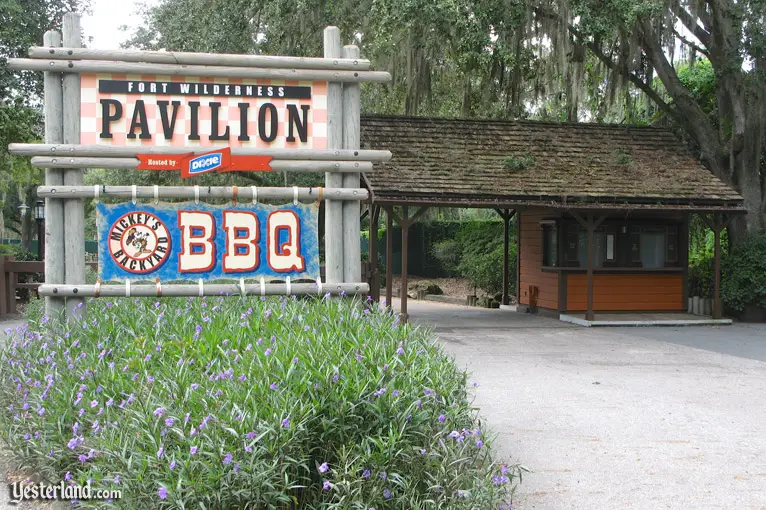
Photo by Werner Weiss, 2011 Former entrance to River Country |
|||
|
Instead of being demolished, River Country has been allowed to deteriorate for 11 years. It’s easy to see some of what’s left of River Country when taking the boats that serve Fort Wilderness and walking through areas open to the public. Some parts of River Country are still used. The former entrance gate serves as the gate to the Mickey’s Backyard Barbecue Dinner Show, described at the official Walt Disney World website as “an all-you-care-to-eat Disney Character dance party with live entertainment at Disney’s Fort Wilderness Resort & Campground.” |
|||
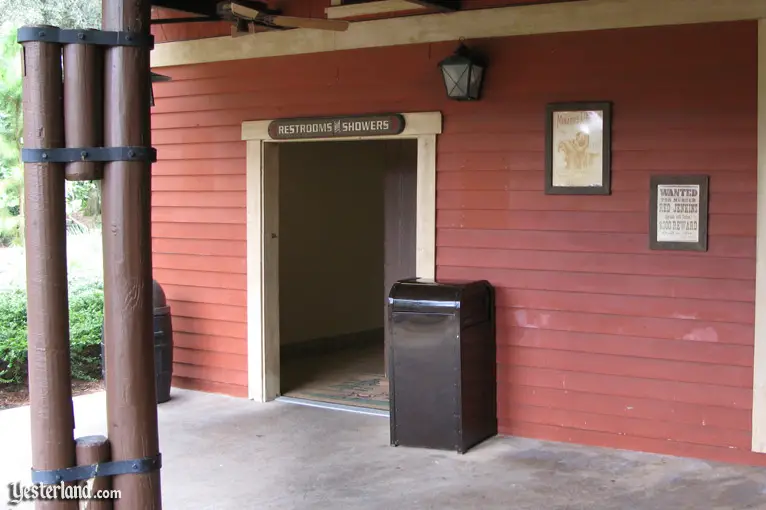
Photo by Werner Weiss, 2011 Restrooms and Showers |
|||
|
River Country’s restroom and shower building still provides public restrooms. The shower portions are partitioned off inside. (Sorry, you can’t take a shower during Mickey’s Backyard Barbecue, no matter how much food you spill on yourself.) The sign still promises showers. An ugly green fence cuts across the front portion of River Country to separate it from the actual water park portion. It looks temporary and fails to match the theme of Fort Wilderness. There are some holes in the fence that make it easy to see what’s on the other side without having to be eight feet tall. None of the photos in this article required trespassing into non-guest areas. |
|||
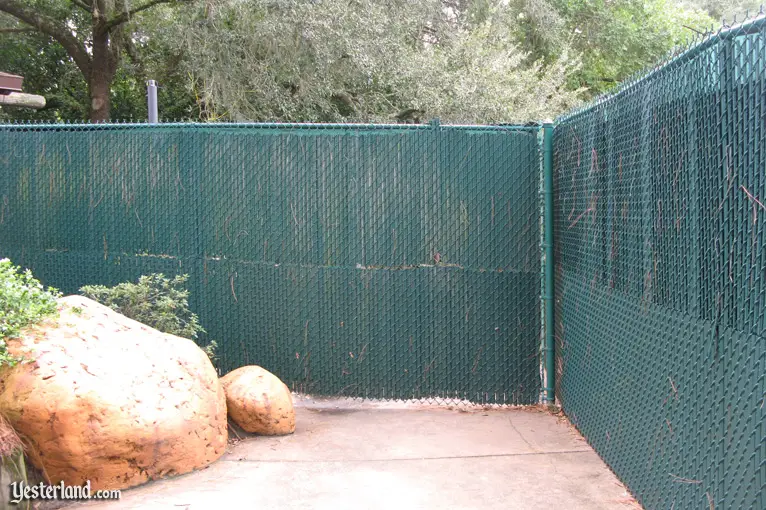
Photo by Werner Weiss, 2011 Green fence |
|||
|
But what about the issue of the water source? Does the water now have to come from a municipal water system? Even if there were good business reasons not to reopen River Country, swimming in warm Florida lakes can be dangerous. The State of Florida does a good job of making its laws available online. So let’s look at at some key items from current waterpark regulations:
Rule Title: Regulation of Water Parks
5F-8.016 Regulation of Water Parks. In other words, Florida’s waterpark regulations don’t regulate water quality. That responsibility belongs to the Florida Department of Health. So now let’s look at key requirements from Florida’s Department of Health:
Department: Department of Health
64E-9.004 Operational Requirements. In other words, by the time fresh water enters the pool, it must qualify as potable (drinkable) water, whether it comes from a water system or from another source. There is no requirement that it must come from a municipal water system. Also, there is no prohibition of starting with water from a natural source. It’s just the water quality that matters. |
|||
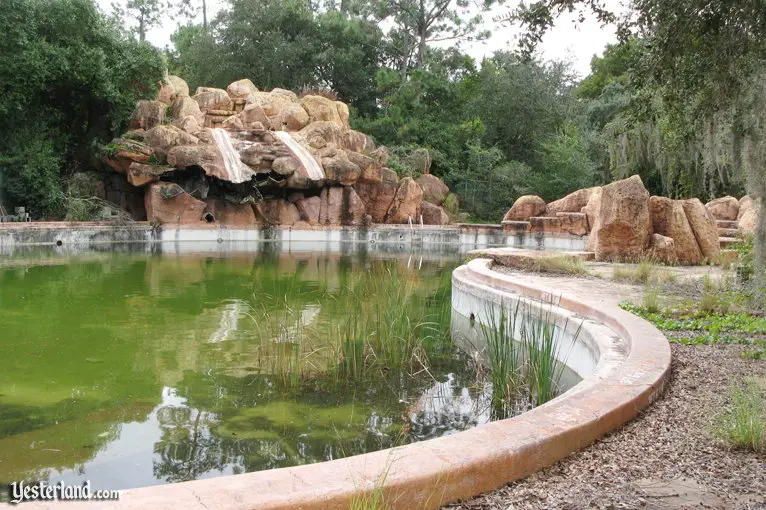
Photo by Werner Weiss, 2011 Upstream Plunge |
|||
|
As noted in part 1, although the Ol’ Swimmin’ Hole cove portion of River Country appears to be open to Bay Lake, it’s actually isolated from the lake by a barrier. The sandy bottom of the cove can be kept clean, just like the sandy bottom pool at Stormalong Bay, the elaborate pool complex at Disney’s Yacht and Beach Club Resorts. The water pumped out of the lake can be filtered, cleaned, and treated. If necessary, Disney could even have increased the cove’s isolation from Bay Lake and engineered a recirculating system, similar to what other Disney water parks have. The Upstream Plunge was always a heated and filtered pool, but even it was never reopened, not even as a pool for Fort Wilderness guests. Once again, it comes down to a business decision. If changes to water treatment were needed, Disney could have made them. But would it have been money well spent? |
|||
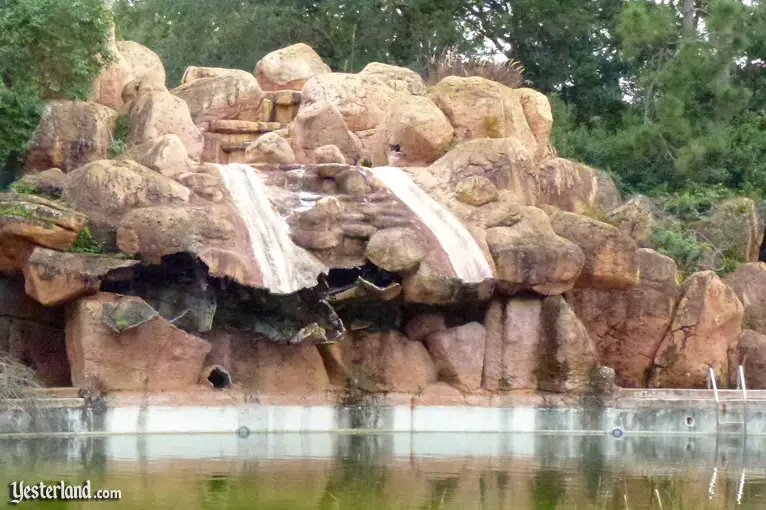
Photo by Werner Weiss, 2011 Slippery Slide Falls—now more like Slippery Slides Falling Apart |
|||
|
As this point, River Country has deteriorated so much that even if there’s a huge surge in guest demand for water parks, exceeding the capacity of the two newer parks, a new third park, more conveniently located, seems more likely than ever seeing River Country rebuilt. |
|||
|
|
|||
|
|
© 2012 Werner Weiss — Disclaimers, Copyright, and Trademarks Updated October 19, 2012. |
||